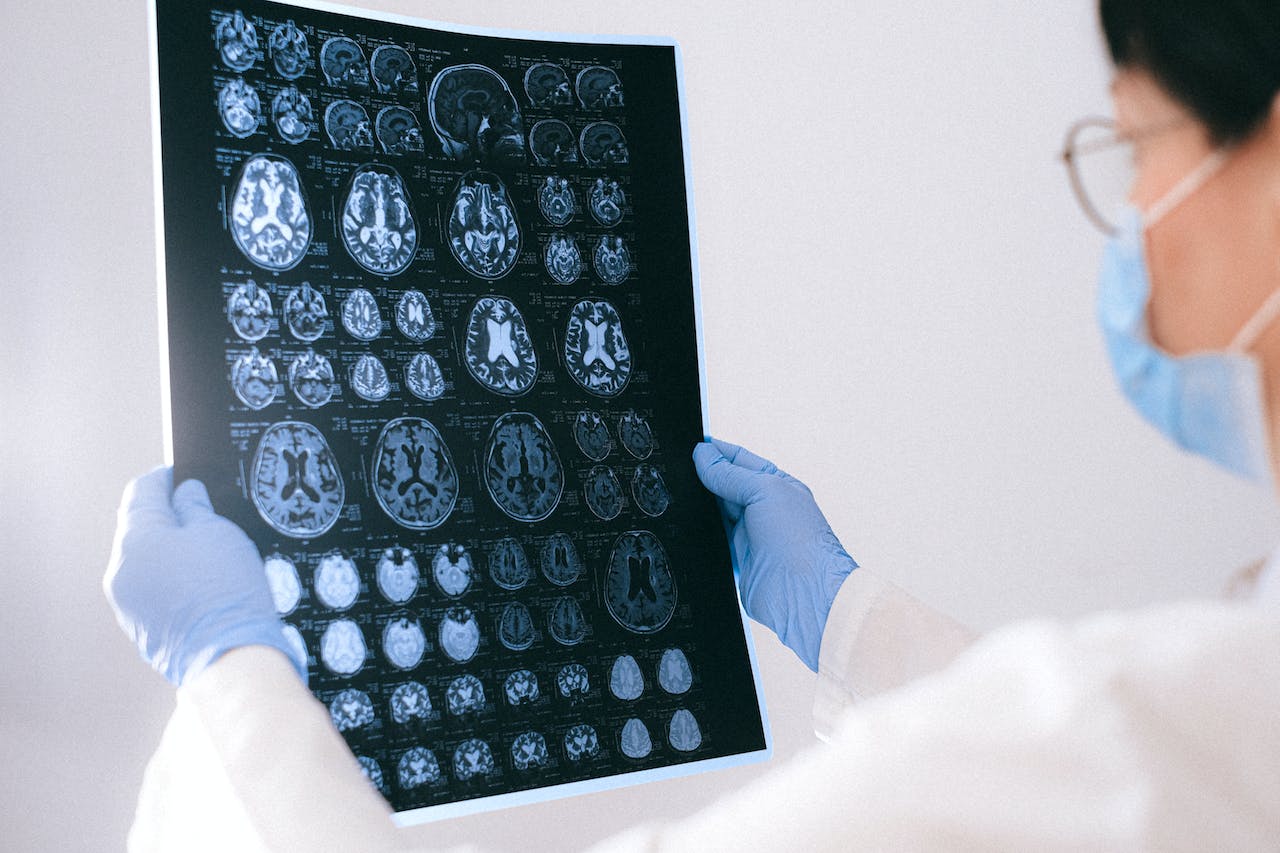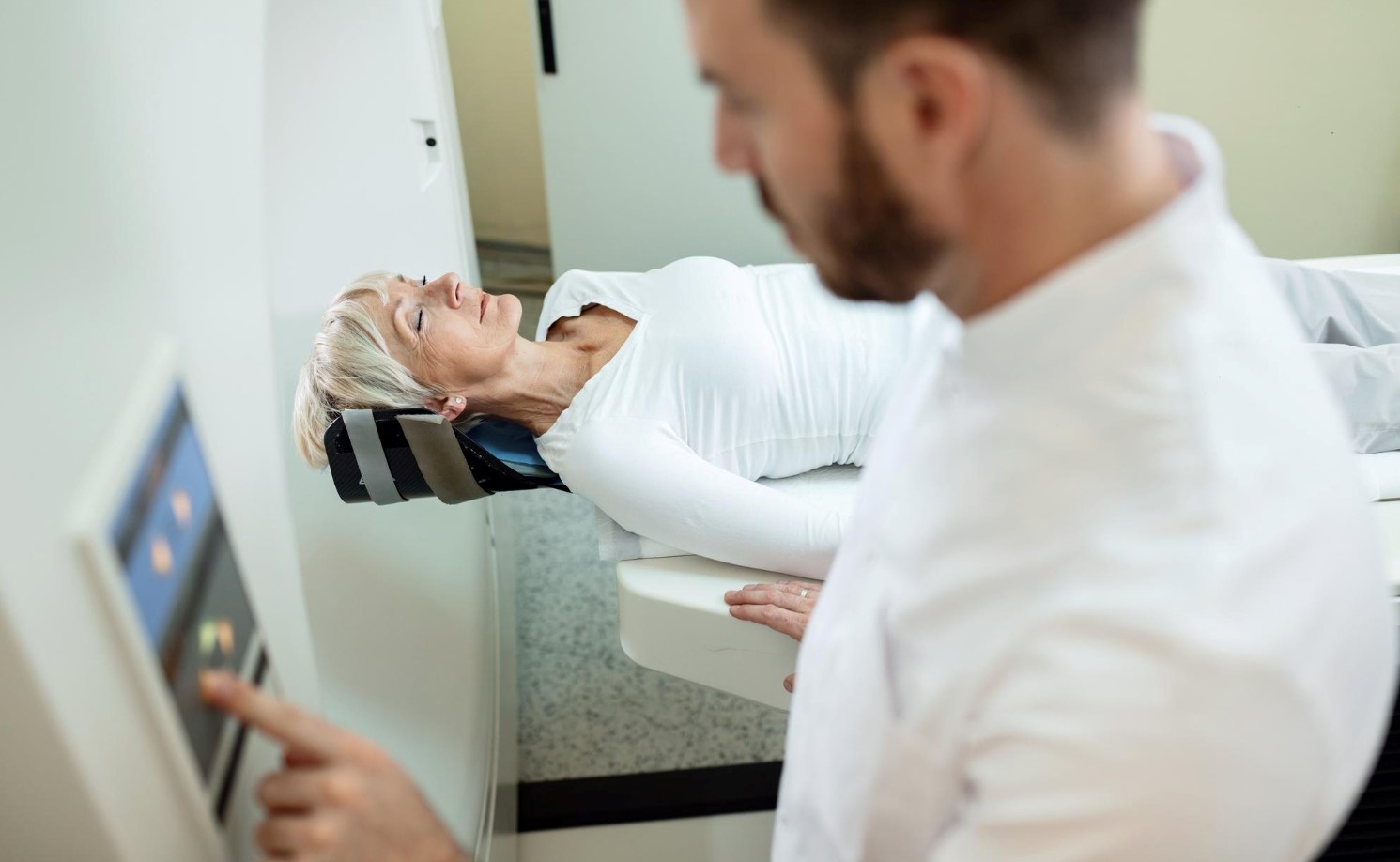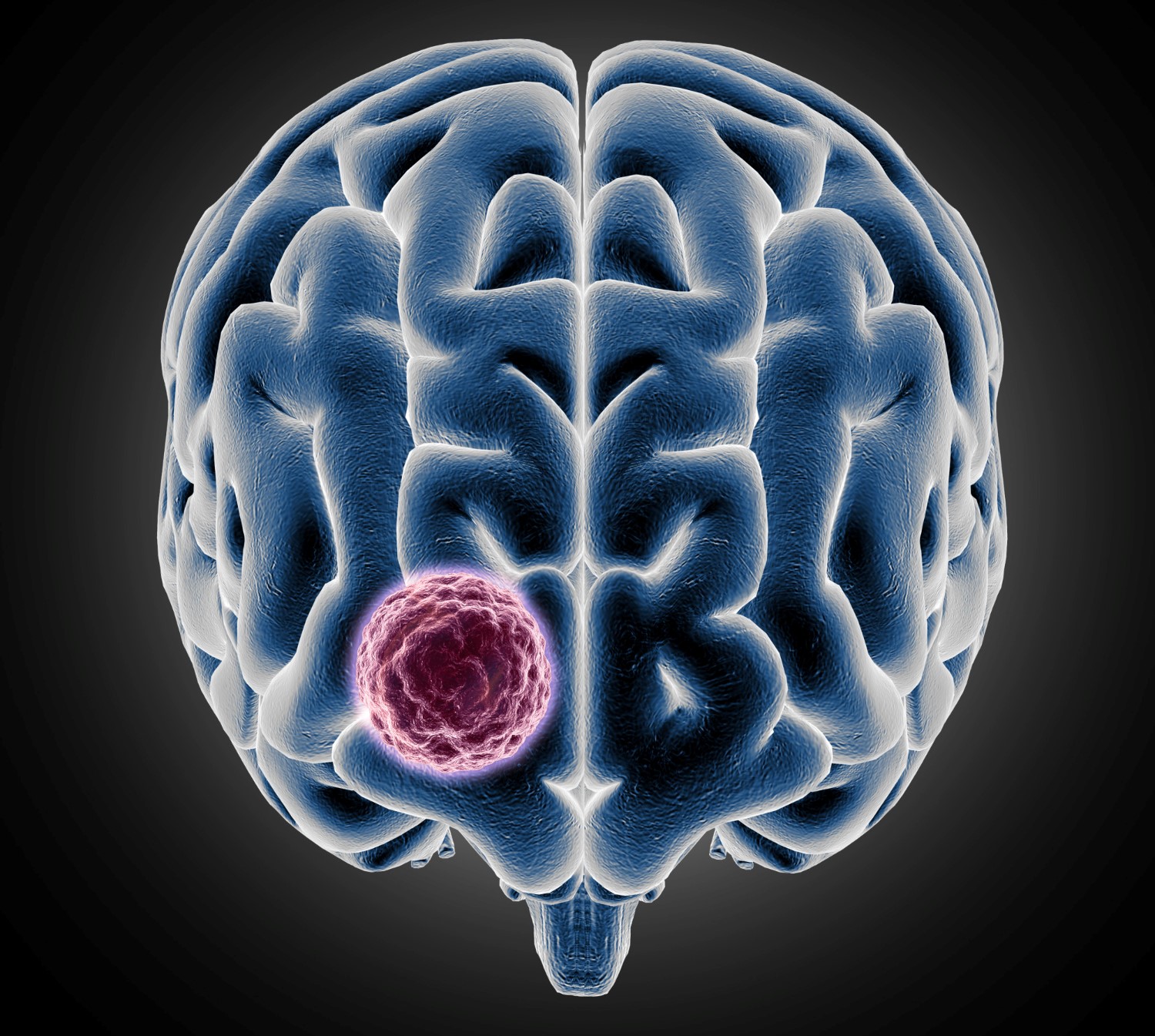What is Gamma Knife Radiosurgery
Gamma Knife radiosurgery is a specialised form of radiation therapy designed to treat brain disorders i.e. brain tumours and arteriovenous malformations) through highly focused gamma rays. Despite its name, it involves no surgical incision. Instead, it uses multiple radiation beams, converging at a single point to deliver a precise dose to specific targets. This technique is used to treat small to medium-sized lesions within the brain.
Gamma Knife radiosurgery is particularly effective for treating deep seated lesions that are difficult to access through traditional surgery or for patients who are not suitable candidates for conventional surgery.
Conditions Treated with Gamma Knife Radiosurgery
The versatility and precision of Gamma Knife radiosurgery make it suitable for addressing various neurological disorders.
Brain Tumours
Gamma Knife radiosurgery is effective in treating both benign and malignant brain tumours. It is commonly used for meningiomas, pituitary adenomas, acoustic neuromas (vestibular schwannomas), and metastatic brain tumours. The precision of the Gamma Knife allows for targeting tumours while sparing healthy brain tissue.
Arteriovenous Malformations (AVMs)
AVMs are abnormal tangles of blood vessels in the brain that can cause serious health issues. Gamma Knife radiosurgery can effectively reduce the size of AVMs or obliterate them, decreasing the risk of bleeding and stroke.
Trigeminal Neuralgia
This is a chronic pain condition affecting the trigeminal nerve in the face. Gamma Knife radiosurgery can target the root of the trigeminal nerve, providing pain relief for patients who do not respond to medication.
Preparing for Gamma Knife Radiosurgery
Preparation for Gamma Knife radiosurgery ensures the safety and effectiveness of the treatment.
- Initial Consultation and Evaluation: The patient undergoes a thorough evaluation, including a review of their medical history, physical examination, and discussion of their current condition. The neurosurgeon assesses the suitability of Gamma Knife radiosurgery.
- Imaging Studies: Imaging studies, such as MRI, CT scans, or angiography, are performed. These images help plan the treatment as they provide detailed information about the size, shape, and location of the target area within the brain.
- Patient Education: Patients are educated about the procedure, what to expect, and any potential side effects. This step includes discussing pre-treatment preparations, such as fasting or adjusting medications, and post-treatment care.
- Physical Preparation: On the day of the procedure, the patient’s head is stabilised using a custom-fitted frame under local anaesthesia . This frame ensures immobilisation of the head during the treatment, allowing for precision targeting of the gamma rays.
Gamma Knife Radiosurgery Procedure
The Gamma Knife radiosurgery procedure is characterised by its non-invasive nature and precision. The process typically involves the following steps:
- Positioning the Patient: The patient is positioned within the Gamma Knife machine, ensuring correct alignment with the stereotactic frame.
- Targeting the Treatment Area: The machine’s computer system uses the treatment plan to precisely target the gamma rays at the specific area within the brain.
- Administering the Radiation: Gamma rays are emitted from numerous sources in the machine, converging at the targeted site to deliver the radiation dose. This process ensures that the maximum dose is focused on the target while minimising exposure to surrounding healthy tissue.
- Monitoring the Procedure: Throughout the treatment, the patient is monitored via video and intercom systems. The medical team checks on the patient’s comfort and the accuracy of the radiation delivery.
The actual time of radiation exposure varies depending on the treatment plan but typically ranges from a few minutes to several hours. During this time, the patient is usually awake.
This is a painless procedure. Patients do not feel the radiation and there is no sound from the machine. The non-invasive nature of this technology allows for a rapid return to normal activities for most patients.
Post-Treatment Care and Follow-Up
After undergoing Gamma Knife radiosurgery, a structured post-treatment care and follow-up plan can help monitor the patient’s recovery and the effectiveness of the treatment.
- Immediate Post-Procedure Care: Following the procedure, patients are observed for a short period to ensure there are no immediate complications. Most patients can leave the hospital on the same day.
- Managing Side Effects: While Gamma Knife radiosurgery is less invasive than traditional surgery, some patients may experience side effects such as headache, nausea, or local discomfort at the frame attachment sites. These symptoms are usually mild and can be managed with medications.
- Follow-Up Appointments: Regular follow-up appointments are scheduled to monitor the patient’s progress. These appointments involve neurological assessments and imaging studies to evaluate the response of the treated area.
- Long-Term Monitoring: Some conditions treated with Gamma Knife radiosurgery, like tumours or AVMs, require long-term monitoring. MRI or CT scans are performed at intervals to assess the long-term effects of the treatment.
- Lifestyle Considerations: Patients are guided on any necessary lifestyle adjustments post-treatment, although most can return to normal activities relatively quickly.
Benefits of Gamma Knife Radiosurgery
Gamma Knife radiosurgery offers several advantages, particularly when compared to traditional brain surgery methods.
Non-Invasive Procedure
Unlike conventional brain surgery, Gamma Knife radiosurgery does not involve incisions. This non-invasive approach reduces the risk of complications like infections and bleeding.
Precision and Accuracy
The technology allows for highly accurate targeting of lesions, minimising damage to surrounding healthy brain tissue. This precision is necessary to treat tumours and vascular malformations located near sensitive areas of the brain.
Reduced Recovery Time
Since there is no surgical incision, the recovery time is shorter than that of traditional surgery. Most patients can resume their normal activities within a day or two.
Outpatient Procedure
Gamma Knife radiosurgery is typically performed as an outpatient procedure, meaning patients can return home on the same day of the treatment.
Lower Risk of Side Effects
The focused nature of the radiation reduces the likelihood and severity of side effects compared to broader-field radiation therapies.
Effective for Multiple Conditions
Gamma Knife radiosurgery is effective for a variety of conditions, including brain tumours, AVMs, trigeminal neuralgia, and others.
Suitable for High-Risk Patients
It is often a suitable option for patients who are considered high-risk for traditional surgery due to age, health conditions, or the location of the lesion.
Potential Risks of Gamma Knife Radiosurgery
While Gamma Knife radiosurgery is generally considered safe and effective, like all medical procedures, it carries certain risks and potential side effects.
- Radiation Exposure: Although the radiation is precisely targeted, there is still a risk of damage to the surrounding healthy brain tissue. This can lead to potential side effects, although the risk is lower than with traditional radiation therapy.
- Swelling: Some patients may experience oedema or swelling in the brain following treatment. This can cause symptoms like headache, nausea, or neurological changes, and may require medical management.
- Short-term Side Effects: Common short-term side effects include fatigue, headache, and nausea. These symptoms are usually mild and often resolve within a few days.
- Long-term Side Effects: Rarely, patients may experience long-term side effects, which can include neurological deficits such as memory loss, balance issues, or changes in cognitive function. Long term effects of radiation can also result in tumour growth from affected tissues.
- Hair Loss: Temporary hair loss may occur in the area where radiation was delivered. This side effect is typically localised and hair usually grows back over time.
- Effect on Adjacent Structures: There is a small risk that radiation could affect adjacent structures in the brain, leading to complications like hearing loss or visual disturbances, especially if the treated area is near sensitive structures.
Long-Term Results and Effectiveness
Studies show that Gamma Knife radiosurgery offers high success rates, particularly in controlling the growth of brain tumours and reducing symptoms of neurological disorders. It also helps in the long-term control of AVMs and relief in cases of trigeminal neuralgia. These outcomes, coupled with a reduced need for retreatment, make Gamma Knife treatment effective.
Results can vary based on the specific condition treated and individual patient factors. Continuous follow-up helps monitor and assess the long-term effectiveness and any late-onset side effects.
Conclusion
Gamma Knife radiosurgery offers a non-invasive, precise, and effective option for various brain conditions. Its benefits, such as reduced recovery time and lower risk of complications, make it a good alternative for many patients. While there are potential risks, the long-term results and effectiveness of this procedure in improving patient outcomes are well-documented.




